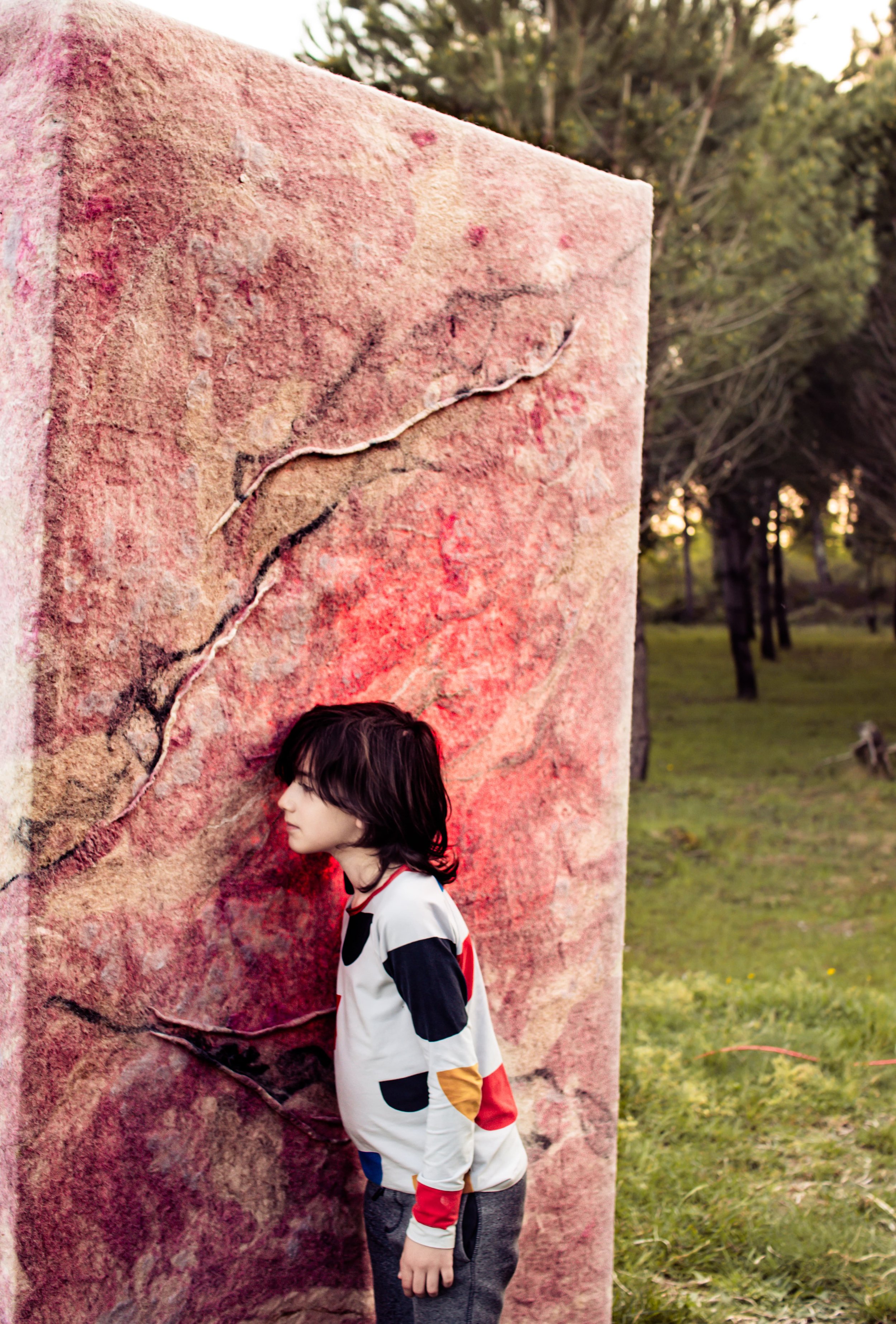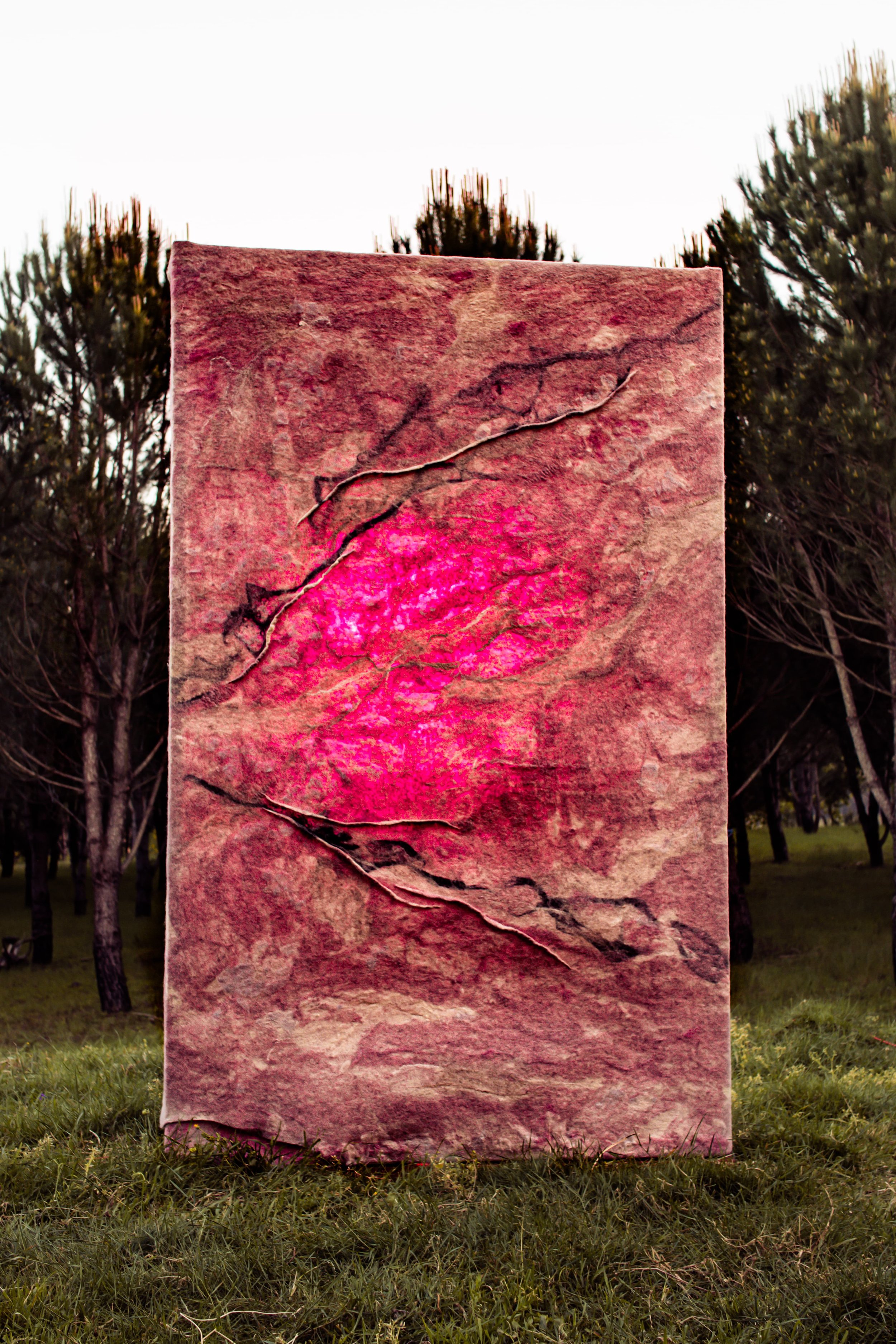Monólito/
Monolith
Viseu, julho de 2017, para os Jardins Efémeros.
Oliveira do Hospital, maio de 2021, para o Festival de Artes.
A instalação Monólito germinou como participação no festival urbano Jardins Efémeros sob o tema do Paradoxo. É uma peça que pela sua dimensão e complexidade ordena um espaço e um contexto adequado. Como consequência disso e também da forma experimental como foi construído, após o fim da efemeridade, esteve adormecido e posto de lado durante alguns anos.
Em 2021 mereceu um desconfinamento digno e após uma intervenção profunda na sua estrutura base, tornando todo o seu interior mais robusto para permitir a longevidade expositiva da escultura. Mantendo o seu funcionamento e conceito original e assim assegurando a integridade autoral de um período criativo específico no desenvolvimento artístico pessoal.
A palavra deriva do latim monolithus, que deriva da palavra grega μονόλιθος (Monólithos), que no que lhe concerne é derivada de μόνος (“um”) ou (“único”) e λίθος (“pedra”), ou seja, significa “pedra única”.
O Monólito é uma peça monumental, sensorial e interativa.
Uma rocha de lã natural, dura e macia simultaneamente. Que sente a aproximação, o olhar e chama com o ronronar de uma frequência muito baixa. À proximidade íntima, o monólito acorda numa coreografia de luz, cor e som. Um movimento interativo e interpretativo entre escultura e pessoa.
É uma experiência humana e sinestésica que defende a proposta de que sons, cores e cheiros estão misteriosamente correlacionados e que esta ligação é intrínseca à natureza das coisas, portanto, potencialmente percetível a todo ser humano.
Técnicas e materiais: Lã feltrada manualmente, estrutura em metal e acrílico, base de mogno, componentes eletrónicos, arduino mega, Leds RGB programáveis e indexáveis, mp3, sistema de som.
Viseu, July 2017, for Jardins Efémeros.
Oliveira do Hospital, May 2021, for the Art Festival.
The Monolith installation germinated as a participation in the urban festival Jardins Efémeros under the theme “Paradox”. It is a piece that, due to its size and complexity, organizes an adequate space and context. It was built experimentally, and upon the ephemerality of the festival, it was dormant and put aside for some years.
In 2021, it deserved a dignified redefinition after a profound intervention in its basic structure, making its entire interior more robust to allow the exhibition longevity of the sculpture. Maintaining its original concept and function and thus ensuring the authorial integrity of a specific creative period in personal artistic development.
The word derives from the Latin monolithus, which derives from the Greek word μονόλιθος (Monólithos), which in turn is derived from μόνος ("one" or "single") and λίθος ("stone"), i.e. meaning "single stone".
The Monolith is a monumental, sensorial and interactive piece.
A natural wool rock, which is hard and soft at the same time. That feels the approach, the gaze and calls upon it with a very low-frequency purr. Nearby, the Monolith wakes up in light, colour and sound choreography. An interactive and interpretive movement between sculpture and person.
It is a human and synesthetic experience that defends the proposal that sounds, colours and smells are mysteriously correlated and that this connection is intrinsic to the nature of things, potentially perceptible to every human being.
Materials and techniques: Hand-felted wool, metal and acrylic structure, mahogany base, electronic components, Arduino mega, programmable and indexable RGB LEDs, mp3, sound system.























